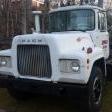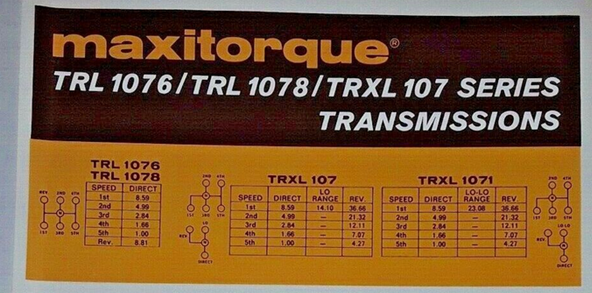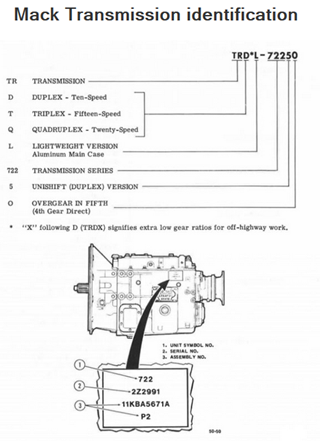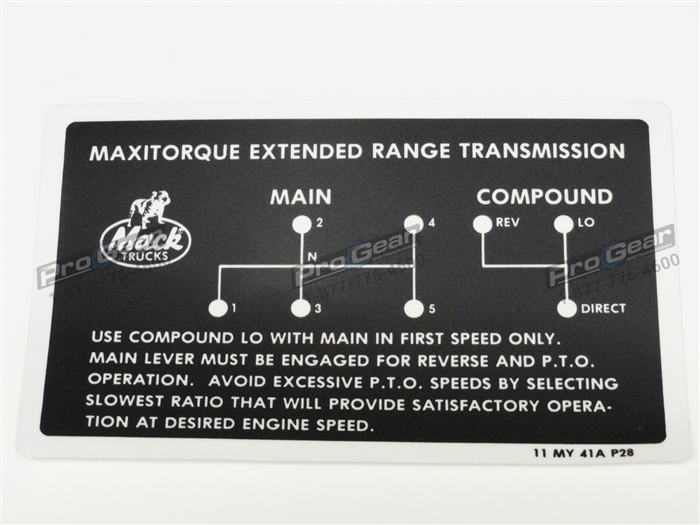-
Posts
2,624 -
Joined
-
Last visited
-
Days Won
37
Content Type
Profiles
Forums
Gallery
Events
Blogs
BMT Wiki
Collections
Store
Everything posted by doubleclutchinweasel
-

Local to me Superliner
doubleclutchinweasel replied to Terry T's topic in Antique and Classic Mack Trucks General Discussion
Very cool Super Dog. -
We discussed the tube-type rims a while back. Yes, they can be an issue. But, if they were all as bad as people say, we would not have successfully used them for all those years. I believe that the condition of the pieces (whether it is straps, rims, or chain binders) and the competence of the user has more to do with it than anything else. But, that's nothing new. Some people can't work a screwdriver safely.
-
Shows last activity on the JustOldTrucks site as 3 years ago.
-

How to track down air leaks?
doubleclutchinweasel replied to Dmurph2016's topic in Air Systems and Brakes
I saw a guy killed under a dump body that fell on him when I was fairly young. Never forgot that. If you block it up, use huge, solid pieces of wood. Don't take chances under that thing. I don't think a 4X4 is near big enough. The mechanic at our shop had 10X10 and 12X12 timbers he used under those things. He also had some steel-framed contraption he made that worked under certain bodies. Be careful. Gravity's a bitch. -

Serivce brakes work but no air to dash valves
doubleclutchinweasel replied to landon7320's topic in Air Systems and Brakes
The year model might also help. There have been a few different brake systems on the Rs. I have some air diagrams, but they are in the service book. Makes them hard to copy. -
Had a really well-equipped shop, for sure. That cylinder did have a good bit of "whip" in it when it unloaded, didn't it?!
-
I wish everybody could be that objective and methodical. There are a lot of old wives' tales and myths that could be dispelled with that kind of methodical testing. Sure a lot more thought-out than the Myth Busters TV show! "Now we know, and knowing is half the battle."
-

H Model Restoration
doubleclutchinweasel replied to h67st's topic in Antique and Classic Mack Trucks General Discussion
Love those Spicer type u-joints. -

About tires
doubleclutchinweasel replied to Licensed to kill's topic in Antique and Classic Mack Trucks General Discussion
20" tires are going to be tube type. That opens that can of worms about the multi-piece rims. 22.5" tires are going to be tubeless. That means 1-piece rims. We've beat that horse to death on here...many times! I have run 20" bias drivers and 22.5" radial steers too. No issues. -

B-61 gearsets.
doubleclutchinweasel replied to Licensed to kill's topic in Antique and Classic Mack Trucks General Discussion
I am real anxious to see what you can do with that B. If it comes out as nice as some of the other stuff in your shop, it should be pretty awesome. -

B-61 gearsets.
doubleclutchinweasel replied to Licensed to kill's topic in Antique and Classic Mack Trucks General Discussion
Point is, there are a lot of options out there. And, don't forget, you can go the Eaton-Fuller route if you want to . But, that adds a lot of complexity in finding all the right parts. The build sheet on mine had several pages of goodies related to the RoadRanger box they built it with. I still like the 13-speed Triplex and 18-speed Quadruplex boxes for top speed. Just as long as you don't twist them in half with that Maxidyne engine! lots of folks running those boxes in hobby trucks behind a 237 Maxi. But, if actually working it, you have to be careful, because those boxes are not built for the torque of a Maxi. The one I used to drive had 4.17:1 gears and the 18-speed. Direct 4th was good for just about 60-62. Hi-Split 4th would easily go to 65-67. I could never find the limit on Hi-Split 5th (didn't have enough HP on that ENDT-673C 250-horse to get there!). -

B-61 gearsets.
doubleclutchinweasel replied to Licensed to kill's topic in Antique and Classic Mack Trucks General Discussion
I don't exactly know what boxes y'all are talking about. Might have been later versions. But, there was a 5-speed with a single stick (TRL-107 series). Then, there was a 6-speed "extended range" with 2 sticks (TRXL-107 series). The "lo" on the compound was supposed to be used only in 1st gear. That's your extra low gear. Here is graphic showing some detail on the ones I am talking about. The TRXL-1070 (or maybe it was a TRDXL-1070) would have been the same as the TRXL-107, but with "direct in 4th", and an overdrive 5th. The "0" on the end of the number is the "overdrive" designation. Model numbers were on the left side of the box. There are several discussions on here that have pictures showing the location. Somebody on here had the one I am talking about (TRDXL-1070). Check out this link. https://www.bigmacktrucks.com/topic/56848-mack-trdxl-1070-questions/ -

H Model Restoration
doubleclutchinweasel replied to h67st's topic in Antique and Classic Mack Trucks General Discussion
Un-freakin-believably nice! -

B-61 gearsets.
doubleclutchinweasel replied to Licensed to kill's topic in Antique and Classic Mack Trucks General Discussion
Like I told somebody on another thread, remember there are overdrive versions of those Maxitorque transmissions. And, the 6-speed version adds a lower gear to boot. And, you get 5 reverses. Plus, you end up with 2 sticks, like God intended in a Mack! Check out a TRXL-1070. Or, you could go the masochistic route and put in a 13-speed Triplex or 18-speed Quadruplex. Those are both "double-overdrive" boxes. And, the lo-lo or lo-split reverses are plenty low. -

H Model Restoration
doubleclutchinweasel replied to h67st's topic in Antique and Classic Mack Trucks General Discussion
Looks like green Gates heavy-duty belts hanging on there. -
It might be a fairly easy swap to change the 5-speed Maxitorque for an old 6-speed Extended Range Maxitorque. That gives you 1 extra low gear. And, as a bonus, you get 5 reverses. These can be found in both a direct and overdrive version (look for the "0" at the end of the model number to get the OD...TRXL-107 vs. TRXL-1070).
-
If I lost an inch, I'd be in trouble...
- 1 reply
-
- 3
-

-

-

2000 rd688. Front-end bounce
doubleclutchinweasel replied to Moparmike's topic in Driveline and Suspension
I've seen worn tie rod ends cause a side-to-side shake. But, you would hope the alignment guy would have checked that. Most common though is wheel or tire...especially if it "didn't use to do it". -

EDNT-675, 235hp 3B family
doubleclutchinweasel replied to Full Floater's topic in Engine and Transmission
Funny! -

B-61 gearsets.
doubleclutchinweasel replied to Licensed to kill's topic in Antique and Classic Mack Trucks General Discussion
We used to joke about the non-turbo 673s in the B-61s we had. Seems they would run about as fast downhill as they would uphill. Not very. -

EDNT-675, 235hp 3B family
doubleclutchinweasel replied to Full Floater's topic in Engine and Transmission
Maybe "B" for "brake" (Dynatard)??? Anyway, it has been a topic for discussion before. -

H Model Restoration
doubleclutchinweasel replied to h67st's topic in Antique and Classic Mack Trucks General Discussion
I have been making commercially available, industrial V-belt pulleys (among other things!) for a living for the last 39 years! So, this one hits close to home. "Matched" belts are cut from the same belt of raw material. So, the individual belts are as close to identical as possible. Each raw belt will be slightly different. So, 2 belts of the same number cut from different raw material could be different. Matched sets are ESSENTIAL in an application like this. There are standard V-belt groove dimensions defined by the MPTA (Mechanical Power Transmission Association). I can probably sanitize a drawing and share some of the information, if anybody needs it. Just need to know the belt type (A, B, 5V, etc.) and the outside diameter (OD) of the pulley. The groove angle changes as the pulley gets larger or smaller. To measure the effective Pitch Diameter (or PD) of the belt, we simply measure over a pair of dowel pins. The pin diameter changes depending on the groove type. Lots of manufacturers of pulleys (we actually call them "sheaves") use a form tool to generate the V-form of the pulley groove. But, I have found that this gives bad angles, chatter in the grooves, bad flank finish, and deformation of the web between the grooves...which can throw off the PD of one or more of the grooves. So, for the last 35 years or so, I have been profiling the grooves with a 35-degree insert. This gives far better groove integrity than can be achieved with a form tool. Let me know if I can help with anything on this. -
I have posted a couple of different Quad shifting patterns on here before. That box can intimidate some people, but it really is not that complicated. Whether using the clutch or not, getting the RPM right between shifts is key. Once you learn how big the drops are between gears, you can hear it easier than you can watch the tach. DON'T RUSH IT! DON'T FORCE IT! WAIT FOR IT! I don't want to sound insulting, so please don't take this next part that way. But, remember to let the RPM FALL when upshifting and RISE when downshifting. I was trying to teach a guy about double-clutching and "floating" gears, and he kept trying to RAISE the RPM between upshifts. I don't remember if you had the 18 or 20 speed. But, in either case, there's not much need to shift the compound until you have the main in 4th gear. At least if empty of lightly loaded. Oh, and the LO-LO isn't really much use on the road. Use LO-SPLIT to start off. Shifting the main with the compound in LO-LO can be a little tricky, since the road speed is kinda low. Try this (for the 18-speed version). LO-SPLIT 1st LO-SPLIT 2nd LO-SPLIT 3rd LO-SPLIT 4th DIRECT 4th HI-SPLIT 4th HI-SPLIT 5th If it is the 20-speed version, try using LO-SPLIT all the way into 5th, then DIRECT and HI-SPLIT 5th. Oh, and another mistake I have seen a lot of folks make is letting the RPM drop TOO much during upshifts. If you try to engage the next gear too soon, it will grind. But, in that case, the grinding will get slower and slower until the gear drops in. If you wait TOO long to try to engage the next gear, it will grind...but the grinding will get worse (faster) the longer you wait. In that case, release the clutch and bump the RPM back up a tick and try again. You'll get it. It just takes a little practice. And, once you master the Quad, you'll be able to claim something that not a lot of us can!
BigMackTrucks.com
BigMackTrucks.com is a support forum for antique, classic and modern Mack Trucks! The forum is owned and maintained by Watt's Truck Center, Inc. an independent, full service Mack dealer. The forums are not affiliated with Mack Trucks, Inc.
Our Vendors and Advertisers
Thank you for your support!








